7 Fabrics for Winter and Fall That Aren’t Bad For The Planet
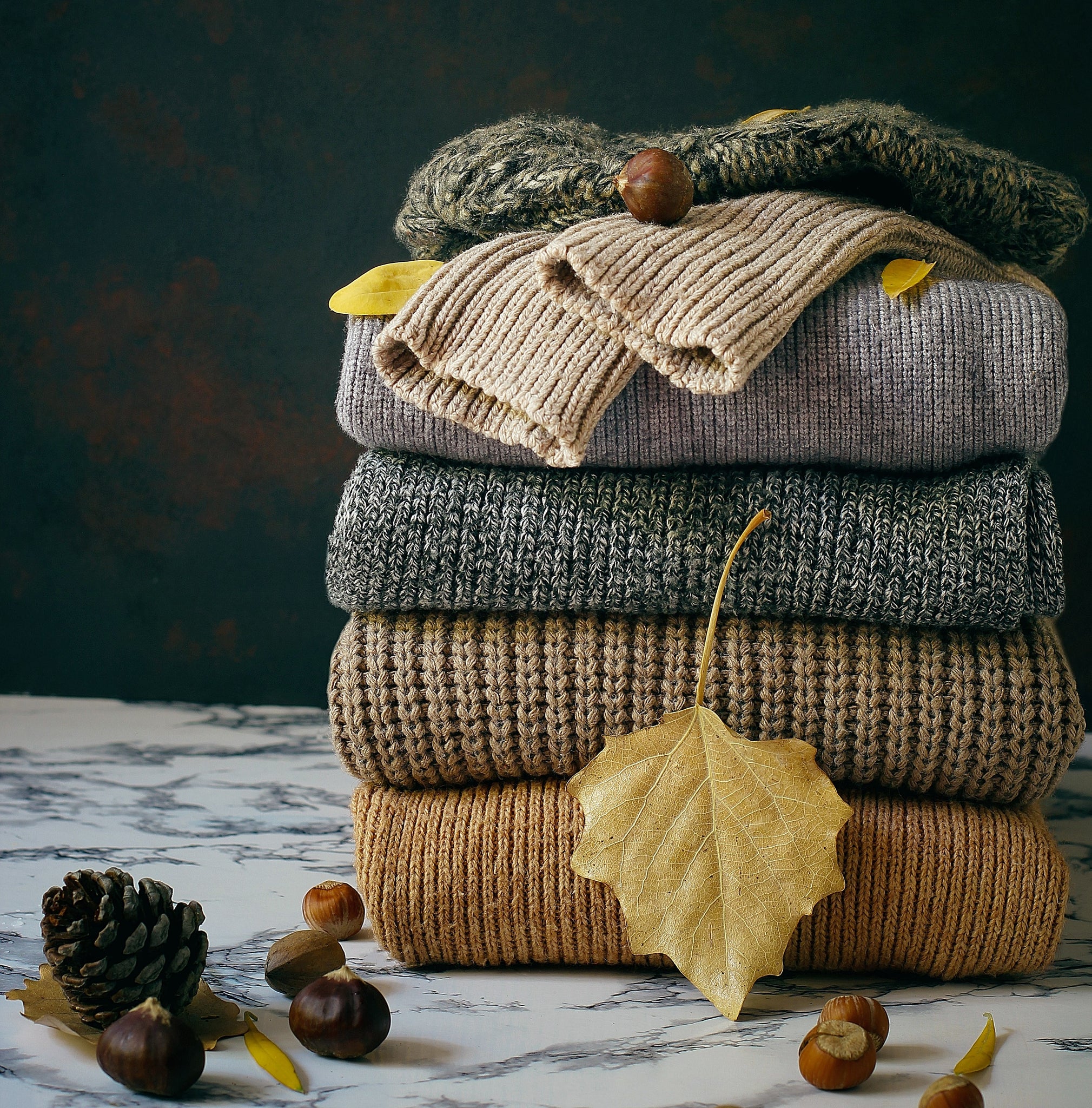
The conventional fashion industry has a massive negative impact on the environment. From excessive water usage to toxic chemical pollution to unsustainable materials that take centuries to break down in landfills, the consequences of fast fashion are impossible to ignore. Thankfully, there’s a growing trend towards more environmentally friendly practices, like shopping preloved pieces on consignment and leaning towards eco-friendly materials and brands.
This blog will explore some of the best eco-friendly fabrics for fall and winter. We’ll shed light on why these are an environmentally friendly choice and offer a few outfit ideas to inspire your new eco-chic wardrobe.
Read: What is Sustainable Fashion?
Why buy eco-friendly fabrics
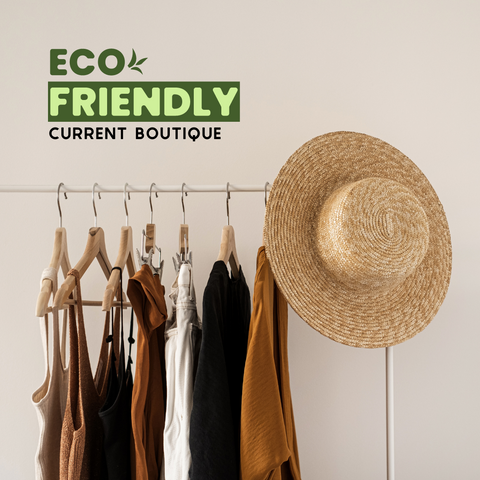
Choosing eco-friendly fabrics is a simple yet impactful way to reduce your personal carbon footprint. If you’re interested in having a more sustainable wardrobe but not sure how to go about it, switching to eco-friendly fabrics is a smart and easy first step. Here’s why the fabrics you purchase and wear matter so much:
- Reduced environmental impact: Eco-friendly fabrics are generally produced with more sustainable practices that use fewer resources, produce less waste, and minimize pollution.
- Biodegradable breakdown: Many plastic -or petroleum-based fabrics take centuries to break down in landfills. This off-gasses massive amounts of carbon dioxide as a byproduct, contributing to global warming.
- Healthier for you: Many conventional fabrics are treated with harmful chemicals that can be absorbed through your skin, causing health issues. Eco-friendly materials often don’t use these toxic substances or plastic forever-chemicals.
- Supports sustainable practices: Your purchases matter, and by choosing eco-friendly fabrics, you’re telling brands that you prioritize environmentally responsible production methods. If more and more people do this, the fashion industry will be forced to respond with more eco-friendly and ethical practices.
- Check out these seven trends in sustainable fashion to learn more.
Fabrics to avoid
Here’s a quick list of “no-nos” to reference if you’re not sure if a product uses eco-friendly materials:
- Polyester: Derived from petroleum (oil), polyester production consumes vast amounts of energy and releases harmful greenhouse gases. Polyester can take up to 200 years to decompose in landfills, releasing even more carbon dioxide into the atmosphere.
- Nylon: Nylon is a synthetic fiber derived from petrochemicals, like polyester, that requires a resource- and energy-intensive production process. It also contributes to plastic pollution because it sheds microfiber plastics that end up in waterways and oceans.
- Rayon (viscose): Although rayon is made from wood pulp, rayon production often involves heavy amounts of deforestation and harsh acid and chemical processing to break down the pulp. These products often also use a lot of toxic dyes and finishing chemicals, making them bad for your skin and health.
- Conventional cotton: Conventional cotton farming relies heavily on pesticides and synthetic fertilizers, which harm the environment and impact local ecosystems. In fact, about 16% of the world’s pesticidesare used on cotton, which is why it’s often referred to as the “dirtiest crop.”
- Leather and fur (sometimes): Some manufacturers create leather and fur using forced breeding and trapping of animals. Along with animal cruelty, there are concerns about water consumption and toxic chemical processing. However, not all leather and fur companies are bad; you can find a lot of alternatives that do not contribute to animal cruelty and emphasize more sustainable practices.
You can’t always avoid these materials, and they’ll likely end up in your closet somehow. For example, swimwear and athletic clothing often use synthetic materials to make them water- and sweat-proof, and some design houses use a blend of eco-friendly and non-eco materials in their clothes. In that case, it’s best to minimize your purchasing of new synthetic products as much as possible, like buying pieces on consignmentto help reduce the production impact and close the fashion cycle.
With that said, what fabrics should you look for when buying new or preloved clothes?
Organic linen
Organic linen is my favorite sustainable fabric choice. Linen has been grown and used for centuries – even back to the ancient Egyptians. It’s produced from the flax plant, a versatile plant that requires minimal water and pesticides. It even grows in low-quality soil, so it can be grown on land where other crops can’t. Plus, every part of the flax plant is used to create linen, which dramatically reduces waste.
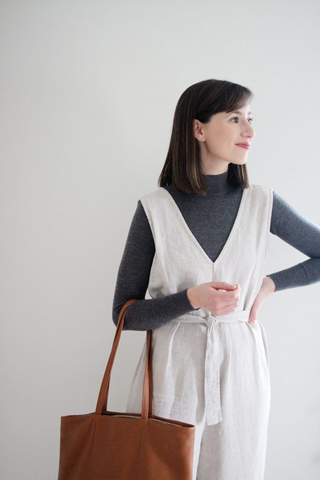
Linen is strong, breezy, and fully biodegradable (when untreated with chemicals). It’s light and airy and can withstand high temperatures. This means it can absorb moisture without holding bacteria. Plus, linen is naturally hypoallergenic, making it a safe choice for those with sensitive skin.
Linen was once considered a summer-only choice because of its moisture-wicking properties, but many companies are starting to use linen in year-round options. Linen is an unexpected fashion choice for winter and pairs beautifully with cashmere, knits, and velvet.
Organic hemp
Hemp – marijuana’s “sober cousin” – is a versatile, sustainable fabric that’s becoming more popular in everyday wear. Hemp is the perfect addition to your wardrobe because it keeps you warm in winter and cool in summer, and it gets softer the more you wash it.

Hemp grows worldwide, and it grows quickly. It requires little water and fewer pesticides compared to other materials. It even naturally fertilizes the soil it grows in, improving the environment by reducing the need for synthetic fertilizers and crop rotation.
Hemp makes for light and flowy pieces. It has a natural, earthy, and unstructured vibe while still looking chic and put-together.
Recycled or organic cotton
Cotton is one of the most common fabrics worldwide, used for everything from t-shirts to denim jeans. But conventional cotton is one of the most water- and chemical-intensive crops grown. Organic cotton is a lower-impact alternative by removing the use of harmful pesticides that are so prevalent in the conventional cotton world.However, according to a New York Times report, not all “organic” cotton is as organic as it sounds, so look for GOTS certified cotton.
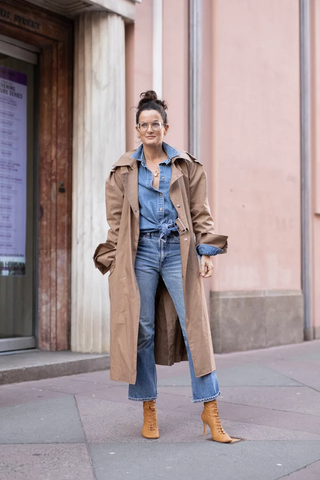
Another great option is recycled or upcycled cotton, which uses post-consumer or post-industrial cotton waste. Recycled cotton has a lower impact than organic and conventional cotton because it utilizes textiles that would otherwise be discarded.
Buying cotton on consignment is one of the easiest ways to minimize waste. Consignment shopping allows you to invest in high-quality cotton while diverting materials from the trash. This reduces the need for more cotton production and lessens the cotton ending up in landfills.
Tencel (Lyocell)
Tencel is a regenerated cellulose fiber from sustainably sourced wood pulp, primarily from eucalyptus and beech trees. Tencel has become a popular option for many sustainable clothing brands because the chemicals used to produce it are managed in a closed-loop system, meaning the solvent is recycled after use. Moreover, it minimizes deforestation compared to other wood-based fabrics because it comes from responsibly managed forests with quick-growing trees. Moreover, Tencel is biodegradable, so it won’t contribute to landfill waste.
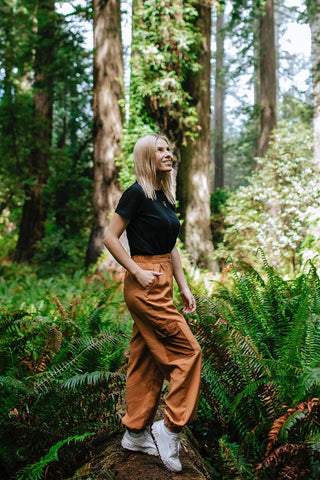
Tencel is an incredibly durable, versatile fabric. It can vary in texture and thickness, making it usable for various clothing types, from dresses to casual wear and even for intimate apparel. It even works for activewear because of its moisture-wicking and anti-bacterial properties.
Another version of the fabric is called Refibra, made from upcycled cotton scraps that are transformed from a cotton pulp and added to the conventional dissolving wood pulp.
Econyl / Bananatex
Along with Tencel, keep a lookout for Econyl and Bananatex fabrics. These fabrics are made by individual companies working hard to offer sustainable alternatives to everyday textiles. These fabrics are not yet mainstream, but they’re worth consideration if you want to purchase a more sustainable wardrobe moving forward.
Econyl, created by the Italian brand Aquafil, is a high-quality yarn derived from synthetic waste like industrial plastic, waste fabric, and fishing nets from the ocean. It uses less water and waste than conventional nylon but has all the benefits and strength of traditional nylon. However, like other synthetics, it emits microfibers that are bad for the environment. Still, it’s a lower-impact option for clothes that are generally handwashed, like activewear, swimwear, and outerwear.

Bananatex, launched by Swiss brand QWSTION, is made entirely from banana plants. The banana plant is said to be self-sufficient and requires no pesticides, fertilizer, or extra water. Bananatex has won a ton of sustainability awards like the Green Product Award 2019, the German Sustainability Award Design 2021, and the Cradle to Cradle Gold certification.
Wool
Wool, known for its warmth and comfort, is a natural fiber from sheep. Because sheep continually grow fleece, wool is a renewable and accessible option. Wool is also biodegradable, so it will naturally break down at the end of its lifecycle. However, it’s important to look for sustainable wool, as regular wool has some ethical concerns with animal cruelty and can be resource-intensive. Whenever possible, look for recycled wool or wool on consignment, or buy from eco-friendly wool brands.

Wool is warm enough to carry you through even the coldest winters, and a high-quality wool garment can last for years. Wool’s chic timelessness means you can invest in one wool coat or sweater, and it will easily become a long-term staple in your wardrobe.
Another alternative is alpaca wool, a soft and luxurious fleece that comes from alpaca as opposed to sheep. Alpaca may be a more sustainable choice since they graze on native grasses, reducing the need for intensive land use and irrigation. They also use significantly less water compared to livestock. Plus, you’ll love wrapping up in a cozy alpaca scarf or sweater for those chilly winter days.
Cork fabric
Cork fabric is an eco-friendly material made from the bark of cork oak trees. Interestingly, the cork can be harvested without harming the tree, and extraction and processing don’t produce waste (except some amounts of chemical-free wastewater). Other industries can reuse scrap The scrap cork is often reused by other industries, and it can be composted.
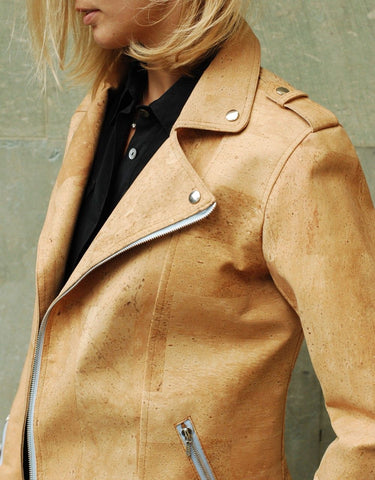
Cork even has net-positive effects: cork trees remove carbon dioxide from the atmosphere. Harvesting cork keeps the tree intact while forcing the bark to regrow. While the tree is regrowing its bark, it consumes more carbon than usual, meaning it actually helps the environment. The caveat is that not all cork tree farms are managed properly, and some brands use unsustainable harvesting practices to cut corners.
Cork fabric can be used for many fashion items, from purses to footwear to clothing. Cork fabric is often used in conjunction with other materials like cotton, linen, or hemp. If you see this material on your garment tag, you can probably feel good about your eco-friendly purchase.
Choosing eco-friendly fabrics for winter
Fill your wardrobe with eco-friendly fabrics that will keep you warm all winter. Options like organic linen, recycled cotton, hemp, and wool are classic and gorgeous, while Tencel, cork, and other emerging sustainability brands offer new alternatives to add to your wardrobe.
By choosing sustainable materials, you can create a wardrobe that reflects your fashion sense while demonstrating your commitment to the environment.
Bundle up and do your part by shopping on consignment. By purchasing clothes on consignment, you’re helping reduce production while closing the fashion cycle, creating a lasting positive impact for seasons to come. Start shopping Current Boutique’s hottest sustainable pieces here.
Photo Sources:
- Linen: https://stylebee.ca/2018/11/23/wear-linen-winter/
- Hemp: https://www.pinterest.com/pin/293648838203930990/
- Cotton: https://www.popsugar.com/fashion/jeans-trends-49039875
- Tencel: https://www.panaprium.com/blogs/i/tencel-clothing
- Bananatex: https://www.bananatex.info
- Wool: https://www.pinterest.com/pin/17803361023754249/
- Cork fabric: http://terials.com/pieces








